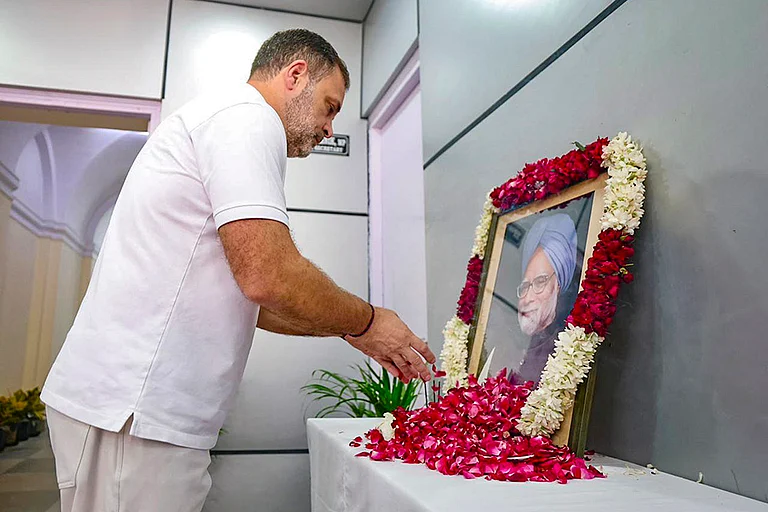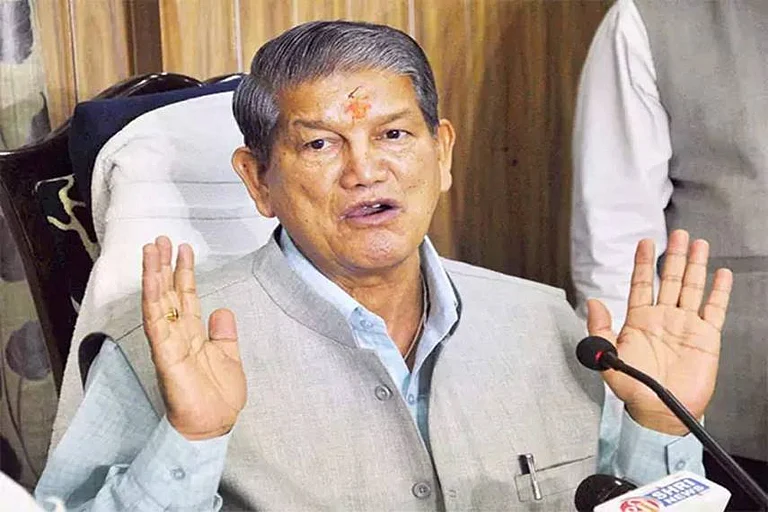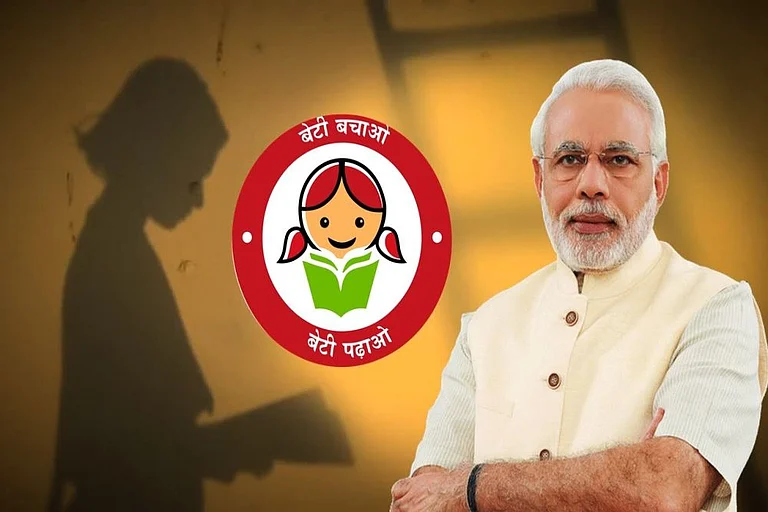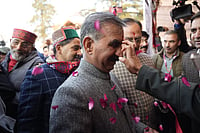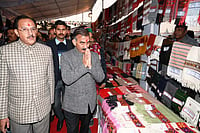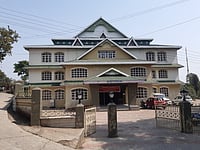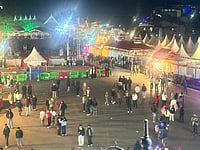The hills of Uttarakhand is where one of the world’s largest and most impactful environmental movements -- ‘Chipko andolan’, a non-violent grass-root struggle took birth even before the region got its statehood. The movement not only helped save millions of trees falling to the axe but also propelled environmentalism in the ecologically sensitive Himalayan region.
Years later, the mountain region witnessed yet another powerful movement. The struggle for Uttarakhand statehood was not simply a movement for political endeavor but it was largely aimed at creating better opportunities for economic development and establishing a distinct regional identity for the people in the hilly areas of Uttar Pradesh.
Twenty four years down the line after creation of Uttarakhand as 27th state, the drive for fulfillment of the objectives of two historic movements -- Chipko movement and struggle for statehood still continues,rather vigorously .
Even after the state having witnessed multiple elections, the political instability has been the biggest worrying factor for the past 24 years ever since the state's birth in November 2000. Will the ongoing general elections, scheduled for April 19, be able to give an answer to this vexed issue?
The tall claims on sustainable development, social and environmental issues besides mitigation against natural (man-made) disasters like the Kedarnath tragedy in 2013 and Chamoli floods are chilling reminders about the state's misplaced priorities. The infrastructure projects sanctioned in the environmentally sensitive zones have made the state highly vulnerable. Unemployment is the biggest issue forcing mass migrations for jobs outside the state.
“It’s really a sad story and shameful also. Twenty four years is not a small period to transform the state. Today, we are facing mass migrations from the hills. Hundreds of richly inhabited vibrant villages lay totally abandoned -- called bhootiya villages (ghost villages). There is not even a single family left there. Young people are deserting villages for jobs in the plains and cities. This is a hard reality of Uttarakhand that no one is addressing," says Jay Singh Rawat, Dehradun-based veteran journalist and writer.
The facts are horrifying about the migration problem yet no political party is taking the responsibility to offer a lasting solution. During past 10 years, 1,053 new villages have been added to the list of ghost villages, mainly in the hills of Pauri Garhwal, Bageshwar, Pittoragarh, Uttarkashi, Champawat, Chamoli and Rudraprayag as per findings of Uttarakhand Rural Development and Migration Commission, set-up by the government in 2017.
A total of 3,496 village panchayats are badly affected by mass migration, says S S Negi, Chairman of the Commission. “People, mostly youths, migrated for better job opportunities, medical facilities, and education due to the absence of infrastructure in the areas they lived.”
Unofficial reports, however, have put-out a rough estimate of 5.06 lakh people having left Uttarakhand even as a lakh-plus did return back home temporarily but a majority never came back even during the Covid-19.
Anoop Nautial, a noted social activist points-out that voting percentage in Uttarakhand is lowest as compared to several neighbouring states. It was just 61.88 per cent in the 2019 Lok Sabha polls as compared to 72.42 per cent in Himachal. Even the states like Sikkim had 81.81 per cent, Arunachal Pradesh 82.11 per cent, Tripura 82.4 per cent and Nagaland 83 per cent.
"It clearly shows the voters don't trust parties and political class in Uttarakhand. The people have lost hopes from their politicians. So they hardly go to vote for them," he analyses the reasons for the low voting percentage. Also because several villages are completely deserted and no one lives, the Election Commission has deleted many registered polling stations from its list.
In Uttarakhand, power is alternated between the BJP and Congress in power but smaller parties, and some regional outfits, besides independents elected to the 70-member state assembly, have always queered the pitch for the ruling party.
Infact, the political instability has caused substantial harm to consistency in the policies and developmental priorities. Rehabilitation of the disaster-hit families, or displaced villagers of infrastructure projects has not happened for years. The re-settlement of the victims of the 2021 Chamoli tragedy continues to elude the villagers for the past two years. Notably, Raini village where the Chipko movement had begun in 1973-1974 has been declared inhabitable. The victim families have no place to go and take shelter.
Political defections and politicians switching sides is something for which Uttarakhand has attained quite a notoriety. Multiple leadership transitions is a reflection of a volatile political landscape and weak leadership.
“In a short period of 24 years, Uttarakhand has seen the change of 13 Chief Ministers. Pushkar Singh Dhami, now in the second Chief Ministerial term had lost election in 2022 But, when the BJP decided to retain him in a clear departure from its own precedent set in Himachal Pradesh in case of Prem Kumar Dhumal, he got the post. So far, only one Chief Minister late N D Tiwari could complete his full five year term in Uttarakhand. Tirth Singh Rawat (BJP) was Chief Minister with a shortest term of 116 days” Rawat explains.
Ironically, most of the time the incumbent chief ministers in Uttarakhand were dislodged by their own party MLAs rather than the Opposition. The case in question also included senior Congress leader Harish Rawat, whose government was brought down by congress rebels.
Between 2017 to 2022, the BJP replaced three Chief Ministers—Trivendra Singh Rawat, Tirath Singh Rawat and Pushkar Singh Dhami, to tackle dissidence in the party.
In the 2012 election, Congress had formed the government with the support of three BSP, one Kranti Dal MLA and three Independents. In that term, the state witnessed four chief ministerial terms starting with Vijay Bahuguna.
In 2016, a new political crisis unfolded under Harish Rawat—who had replaced Vijay Bahuguna. Several Congress MLAs defected, leading to a period of uncertainty and upheaval in the state's administration. The state also came under President’s Rule briefly. But, Rawat bounced back after interventions from the high court and later the Supreme Court.
This Lok Sabha election is not going to be very different from the past. The opposition Congress remains in complete disarray. Most of its top leaders including Harish Rawat managed to wriggle –out from the contest at Haridwar—where his son Virendra Rawat is in the fray against former BJP Chief Minister Trivendra Singh Rawat. Two others Pritam Singh and Yashpal Arya—both former state Congress presidents stunned everyone choosing not contest the Lok Sabha polls
In the upper hills, the BJP has fielded the party's national spokesman and former Rajya Sabha member Anil Baluni from Pauri Garhwal in place of former CM Tirath Singh Rawat. Ganesh Godiyal, a former state Congress president is giving a tough fight to Baluni contesting for the first time. The constituency having a sizable number of ex-servicemen and soldiers is also affected by mass migrations from the villages.
The high point of the poll scenes in the hill state is the BJP being in the power is hoping to strike a hat-trick on all five seats as it did in 2014 and 2019. Prime Minister Narendra Modi has already campaigned in the state and held a rally at Rishikesh.
He primarily spoke about the country's security and threat of terrorism yet reaffirming that terrorism spreads whenever there are weak and unstable governments. The "weak" Congress governments in the past could not strengthen the border infrastructure. Now, roads and modern tunnels were being built along the borders, he added.
The Prime Minister also invoked ‘Rama Lalla’ in Uttarakhand and accused the Congress of questioning the entity of Lord Ram and opposing the construction of the Ayodhya temple.
Describing Uttarakhand as the land of the flower 'Brahma kamal', he asked people to push the lotus button during polling and put all five Lok Sabha seats into the BJP's kitty.
On the Congress side, Priyanka Gandhi Vadra has campaigned in the state. Ahead of the poll several congress leaders including a sitting MLA has already quit the congress and joined the BJP. The leaders like Harish Rawat are said to have opted to stay out of the Lok Sabha contest as he too has CBI inquiry pending.
In the state popular for its four most sacred and revered Hindu places of worship — Badrinath, Kedarnath, Gangotri and Yamunotri, worries are all about a balanced development, human safety against frequently happening mega disasters (including man-made tragedies) and political stability to achieve objectives set out at the time of Uttarakhand's formation.







